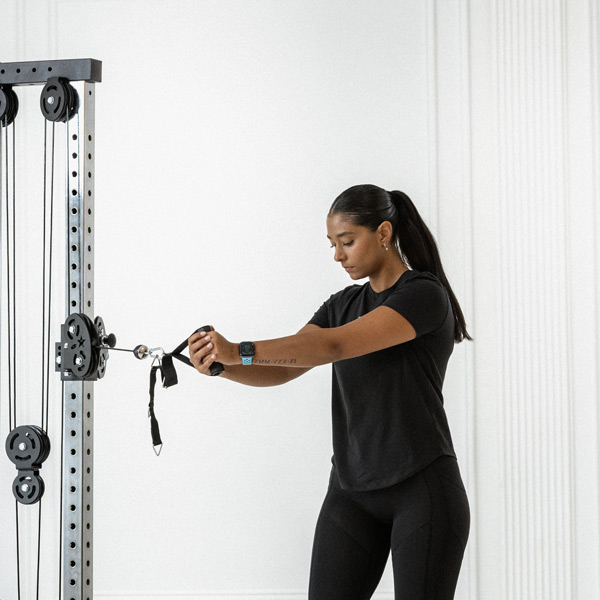Cable Standing Russian Twist
 Auto Detected
Auto DetectedCable rotation that targets obliques and rectus abdominis to build rotational strength and core stability; used for functional conditioning and sports performance.
About Exercise
Equipment
Single Cable Machine
Difficulty
3/5 • Intermediate
Primary Muscle Groups
Obliques
Secondary Muscles
Abs, Lower Back
Popularity Score
6
Goals
Training Style
Setup Requirements
Requires Rack
No
Requires Bench
No
Requires Spotter
No
Space Needed
Small
Noise Level
Low
Muscle Breakdown
View Muscle MapObliques
10/10External Obliques, Internal Obliques
Abs
7/10Rectus Abdominis
Abs
5/10Transverse Abdominis
Lower Back
4/10Erector Spinae
Programming
Typical Rep Range
10-20 reps
Rest Between Sets
30-60 seconds
How to Perform
Stand sideways to a cable machine with the pulley at chest height, gripping the handle with both hands extended in front. Position the cable on your right side, feet shoulder-width apart, core braced.
- Exhale and rotate your torso to the left, keeping arms straight.
- Pivot hips and feet slightly to follow the rotation.
- Pause briefly at the end range across your body.
- Inhale and control the return to center against cable tension.
- Maintain neutral spine throughout.
- Repeat for reps on this side.
Coaching Tips
Form Cues
- Twist from torso, not arms.
- Keep spine neutral.
- Pivot feet slightly.
- Brace core tight.
- Control the return.
Breathing
Exhale during the twist rotation; inhale on the controlled return to start. Brace core before each rep.
Tempo
2-1-2
Range of Motion
Rotate from facing the cable to torso turned 90 degrees left, arms crossing body without rounding spine.
Safety
Safety Notes
- Avoid if lower back pain or pregnancy.
- Start with light weight for form.
- Stop if neck or shoulder strain.
- Use slow tempo to prevent momentum.
Spotting
No spotter needed; use cable machine's weight stack for safety.
Common Mistakes
- Using momentum to swing.
- Rounding lower back.
- Excessive hip sway.
- Arms pulling instead of torso.
- Incomplete rotation.
When to Avoid
- Lower back injury
- Pregnancy
- Acute shoulder impingement
Flexibility Needed
- Torso rotation range
- Hip mobility for pivoting
Build Up First
- Core bracing technique
- Basic standing posture
Also known as
Standing Cable Twist, Cable Torso Rotation, Cable Oblique Twist
Found this helpful?
Share your thoughts or help us improve this guide.
Similar Exercises

Cable Standing Russian Twist (Left)

Single Cable Machine
Obliques

Cable Seated Russian Twist
Single Cable Machine
Obliques

Russian Twist

Bodyweight
Obliques
Dumbbell Russian Twist
Dumbbells
Obliques
Kettlebell Russian Twist
Kettlebell
Obliques

Medicine Ball Russian Twist
Medicine Ball
Obliques

Stability Ball Russian Twist
Stability Ball
Obliques

Balance Trainer Russian Twist
Balance Trainer
Obliques
Cable Standing Calf Raise
Single Cable Machine
Calves

Cable Chop
Single Cable Machine
Obliques


subscribe to our newsletter
Contact Us
hello@trainfitness.aiFind Us
130 Spadina Avenue, Toronto,
Ontario, M5V 0H4, Canada
©2025 All Rights Reserved
